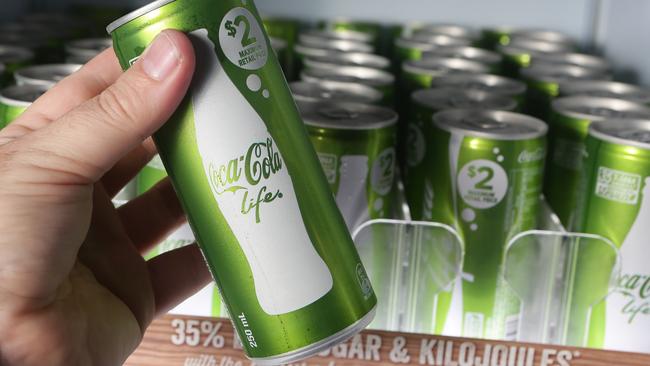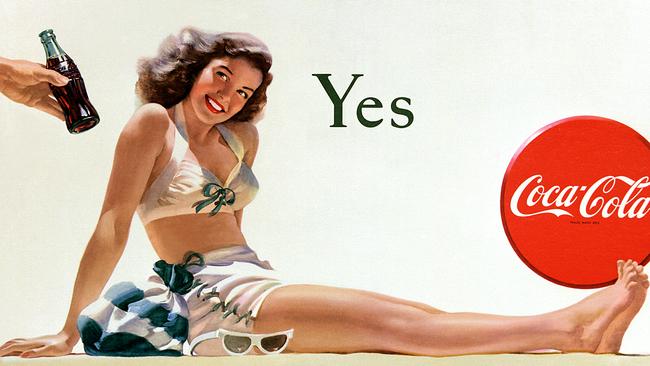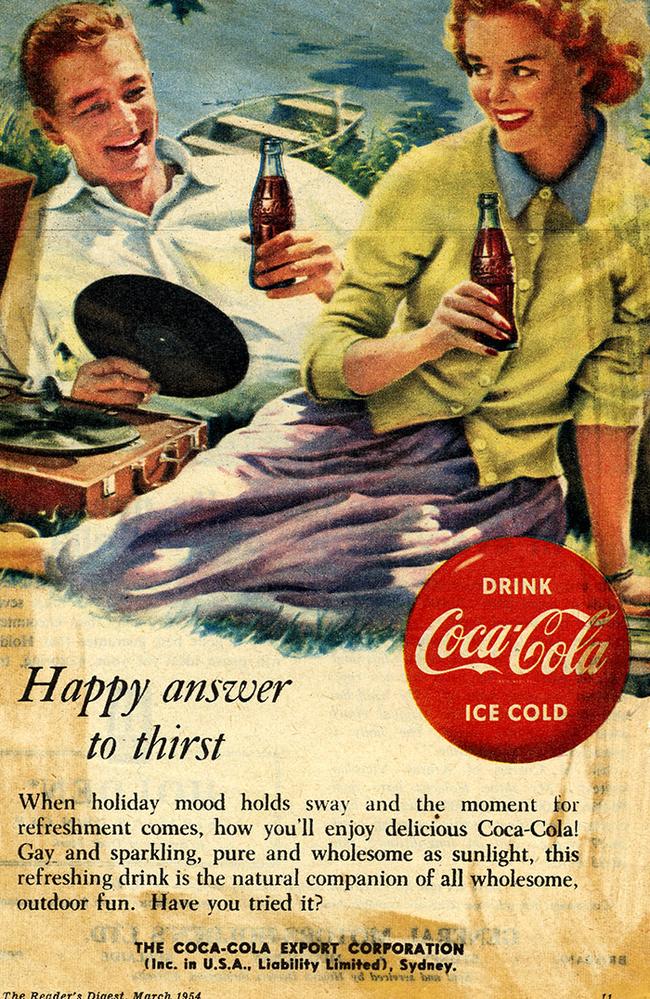Spork Life: Dysfunction at the heart of Coca-Cola
COKE Life has turned out to be one of those inventions no one ever asked for or wanted. So why did Coca-Cola launch such a fizzer?
COKE Life is the spork of drinks.
The new Coca-Cola beverage in the green packaging is a mashup between Coke and Diet Coke, with 35 per cent lower kilojoules. And like the spork (part spoon, part fork!) Coke Life is turning out to be one of those great inventions nobody really wanted.
Sales for the sort-of-healthy cola were reported at 7 million litres in five weeks, half as much as Vanilla Coke managed in the same period. Life represented just 2.5 per cent of total Coke sales in the month of June, after launching in April.
Coca-Cola’s Australian spokesperson claims they never meant Coke Life to be a big hit, that the “launch was very successful,” and that the point of Coke Life is to introduce the plant sweetener Stevia to the local market.
For some reason though, Coca-Cola has been doing unusually heavy discounting of its whole product line in recent months to boost sales. In September Coke was briefly cheaper than Pepsi for the first time in years, according to a supermarket pricing survey. Consumers seem mostly unimpressed by the new Coca Cola offering.
For research purposes I went and bought a bottle of Coke Life at the milk bar. It actually tasted to me a lot like Coke, which is to say perfectly delicious. But people who like the taste are asking, is a 35 per cent kilojoule cut enough?
One Aussie even compared the slightly drab green of the new labels to the olive colour used on plain cigarette packaging.

So why did Coca-Cola — the company that for so long had the best marketing in the entire history of the whole world — launch such a fizzer?
The answer is simple: Coca-Cola is not the golden child it once was. In America, sales of soft drinks have fallen for 10 straight years.
While the company is still seeing strong sales, a lot of growth is coming from the poorer parts of the world. The richest countries have become more health-conscious and moved on. Even schoolkids apparently prefer kale juice these days.

The Coca-Cola company is working very hard to cover for the decline of their once all-powerful beverage. This means experimenting.
Remember when they launched those smaller cans priced at $2? That was part of the same strategy — trying to find a format for Coke people would actually want to buy.
The problem snuck up on them slowly, then all at once.
While Coke had its eyes locked on fierce rival Pepsi, a funny thing happened in the beverage market. People started wanting drinks that did things. The rise of “functional beverages” is obvious if you stand in front of the drinks fridge.
There are juices for health, Gatorade for sport, tea for calm, energy drinks for staying focused. Even iced coffee is sold on functionality now — it picks you up, or stops you being so confused.
Coke’s famously simple slogan “Enjoy” is adrift in this new outcome-oriented era. Exactly what is Coke for?
To compensate for the rot at the heart of its empire Coke has innovated fast. They own Mount Franklin, Powerade, Mother energy drinks and Vitamin Water.
It has even launched a part juice, part milk product in China called Pulpy Super Milky. Apparently it is going crazy.
Those are all triumphs of a sort. But when the market for beverages is less about Coca-Cola, the company named for that beverage will probably have a bad time.
The shift to functional drinks is ironic for Coca-Cola. The drink was originally invented in 1886 as a functional drink, by a man who became addicted to opiates after being wounded in the American Civil War.
The retired colonel turned pharmacist said his new drink based on kola nut and coca leaves cured morphine addiction, and a range of other problems. Interestingly the earliest version also contained alcohol until prohibition came throughout he USA.
Coca-Cola became the most recognised brand in the world by shedding those pharmaceutical origins. It spent a century as the globe’s most dominant consumer icon. Perhaps, to survive, it needs to return to its roots?

Jason Murphy is an economist. He publishes the blog Thomas The Think Engine. Follow him on Twitter @jasemurphy.




